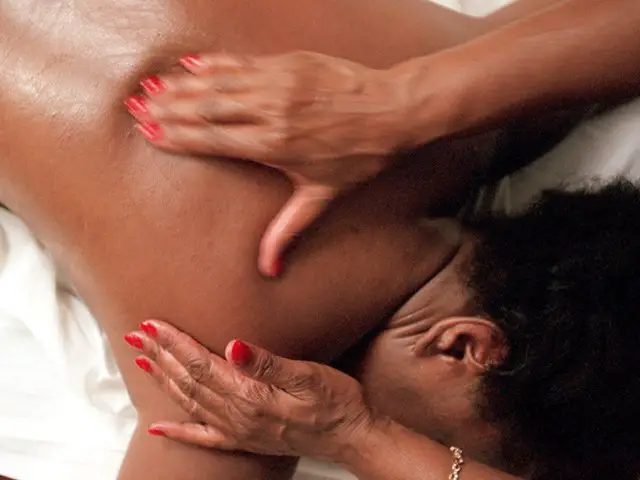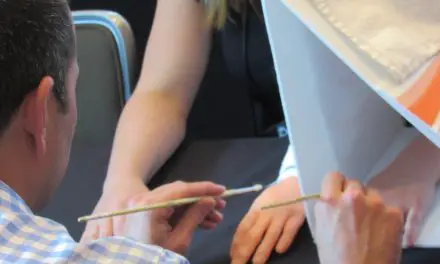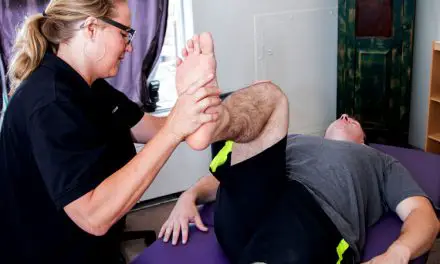In 2005, a relatively healthy 88-year-old man in Taiwan sought medical treatment after falling down due to weakness in his arms and legs. He turned out to be experiencing acute kidney failure and fever as well. In taking his history, his healthcare team learned that he received massage therapy for one to two hours every other day, but he had changed his routine the day before.
On that day, he had received a two-hour massage, and two massage therapists had given him the massage at the same time. They were also therapists whom he had not sought treatment from before, so they were not familiar with him and his previous routine. The massage was much stronger than he was used to. He experienced pain and soreness that night, but he did not seek help for that until the fall the next day. The team administered intravenous hydration and electrolytes, and within three days, the man recovered.
The man had had rhabdomyolysis, a dangerous condition where the muscles start breaking down, and waste products from that tissue damage are detectable in the blood and urine. If the damage is too severe, then the kidneys cannot handle it, and they start getting damaged and fail as well. As a result, severe cases of rhabdomyolysis can be life-threatening. This condition can be caused by crush injuries or from extremely excessive amounts of exercise that overtax muscles. In his case, he had gotten rhabdomyolysis from a massage that was too vigorous.
Can massage damage muscles?
The evidence that massage can damage muscles is growing since there are a number of case studies of rhabdomyolysis. For example, in 2020, a young Chinese woman with anemia had pain in her thighs and “tea-colored urine” for one day after cycling and having a percussion massage with a massage gun by her training coach. Her creatine kinase (a byproduct of muscle damage) level in her blood was so high that it was off the charts.
Also, basic physiology and biomechanics can provide some answers. For example, Ehlers-Danlos Syndrome (EDS) is a connective tissue disorder that makes tissues extra fragile, sometimes leading to hypermobility of joints. It can also cause muscle cramps, leading people with the syndrome to seek out massage therapy to relieve the spasms. It’s quite plausible biomechanically that deep tissue massage can damage such fragile tissues.
The theoretical possibility, based on shared healthcare practitioner knowledge and real-world data reported from clinical practice, reinforce the evidence that massage that is too vigorous can lead to muscle damage. A search of the literature to find out whether the question of how massage could damage muscle tissue had been studied did not yield any results, but the possibility that massage that is too vigorous could act as a minor form of crush injury is plausible—a factor that is already known to cause rhabdomyolysis.
More research would be necessary to confirm or rule out this possibility before declaring that it is the mechanism, but that possibility is consistent with what we know about rhabdomyolysis. Massage clients and therapists alike need to be aware of this possibility and to take care to avoid it in clinical situations, as described in the following sections.
Besides that body of knowledge, the evidence from the man’s laboratory tests confirms that relationship as well. The healthcare team repeatedly measured the amount of certain compounds in his blood that are markers for muscle damage and created a line graph called a time-concentration curve to show how those markers changed over time as they treated him with fluids and electrolytes.

White blood cell count returned to normal levels after 10 days while creatine kinase levels reach almost zero. (Illustration by Nick Ng)
It’s the same principle behind using a breathalyzer to measure the amount of alcohol in someone’s blood—the longer time passed after the event, the less alcohol will be there to measure because our bodies break the alcohol down and get rid of it.
As a result, the time-concentration curve will show a maximum blood alcohol content, which will continue to fall as the body breaks down the alcohol and gets rid of it.
In the same way, this man’s doctors were able to trace when the markers indicated that the maximum amount of muscle damage had occurred and how those markers diminished over time as he was treated. The time-concentration curve peaked at the right time to add to our confidence that the massage was the cause of the muscle damage.
Can you get nerve damage from massage?
Research has found numerous cases where massage therapy can cause nerve damage. There are case reports in the literature that massage can cause damage to the radial nerve, the spinal accessory nerve, the posterior interosseous nerve, and others.
The case description of the person who experienced injury to the radial nerve when receiving massage for a ganglion cyst is difficult to find and the article is in Chinese, making it inaccessible to people who don’t read the language.
On its own, it would be easy to dismiss for those reasons. But with each additional case report of nerve injury due to massage that it is consistent with, it becomes more plausible, and adds a little bit to the evidence base in that it’s consistent with what we know about massage and muscle damage. Case reports are the weakest form of evidence, but repeated reports of similar phenomena from different observers are stronger than a single report.
In the case of the 38-year-old woman who experienced spinal accessory nerve damage while receiving deep tissue massage, the pain began during the massage and continued after the massage ended. She also experienced scapular winging—a condition in which the shoulder blade sticks out from its normal position in the back—and a droopy shoulder. Physical therapy treatment was able to relieve her pain, but not to resolve the structural and functional damage to the nerve, so the shoulder blade and shoulder symptoms continued for years afterward.
The case of neuropathy of the posterior interosseous nerve reported in the case study resulted after friction massage was applied. The condition resolved satisfactorily after about two months.
These cases of nerve damage resulting from massage have something in common with cases of muscle damage. They are associated with deep pressures, such as friction and deep tissue massage. This would also be consistent with the speculation that massage, applied too vigorously, could be causing a minor form of crush injury, resulting in rhabdomyolysis.
Still, as Dr. Edzard Ernst observes, who is a former alternative medicine researcher at University of Exeter, many of the reported cases of nerve damage come from non-professional massage therapists and massage itself, carried out by trained massage therapists, is a relatively safe practice.
What should you do to avoid muscle or nerve damage during a massage?
If you go for a massage, you should be aware that, as with any healthcare provider, you have rights that must be observed, and you have the responsibility to speak up if you can tell that something is going wrong during the session.
As the client, this is your session, and you and your comfort are paramount. The massage therapist should honor any reasonable request that you make, and adjustments of pressure or positioning, or a request to stop or change what the therapist is doing should be carried out immediately.
If the massage therapist continues what they are doing after you ask them to stop, this is a major red flag. You are within your rights to stop the massage and leave if your requests are not honored.
Fortunately, this will not happen with most massage therapists. The majority of therapists will be sensitive and responsive to what you ask for in the massage. But as with any group of people, there are a few practitioners who will insist on carrying out painful or invasive techniques, despite your wishes. Many clients report feeling that they cannot communicate their wishes to the therapist, for fear of hurting the therapist’s feelings. If the therapist is a true professional, they won’t feel hurt or threatened when a client asks to change something about the massage.
The vast majority of therapists want to provide you with a good massage experience and will be responsive when you ask to adjust pressure, positioning, and other such aspects of the massage. If something hurts, then you can and should feel free to ask the therapist to stop doing it.
Another red flag is the failure of a massage therapist to take a medical history on your first visit and to check in with you on following visits to determine whether anything significant in your medical history has changed. There are many conditions that are general or local contraindications for massage, some of which can make clients vulnerable to muscle and nerve damage. Your massage therapist should continue to be aware of your basic health and of any changes to it.
What should massage therapists be aware of to prevent muscle and nerve damage?
Forceful strenuous deep-tissue massage, friction, and compression are the forms of massage that have been reported as involved in the most cases of observed muscle or nerve damage, so use those techniques with care, mindfulness, and awareness.
Know your client’s basic health state, check in with them about any changes, and watch for nonverbal cues during the massage, such as withdrawing, tensing, sharp intake of breath, and the like. These may indicate that the client is experiencing pain but does not feel that they can tell you verbally and ask for the massage to be changed. Create a safe and welcoming environment for the client, and support them in communicating how they are experiencing a treatment.
Massage has been observed and studied for centuries, and the evidence shows that massage is an effective treatment for certain conditions. Because massage is an effective treatment for pain, anxiety, and other conditions, it has the potential to be a double-edged sword. The only way that a treatment is guaranteed to never cause harm is for it to have no effect at all.
Any treatment that has an effect has the potential to have harmful side effects, but fortunately, massage therapy carried out by a professionally-trained therapist seems to cause very little damage. Still, “very little” is not the same as “none,” and it’s worth being informed about potential side effects from massage in order to know what to look out for in case problems arise.
You’ll probably never see it happen, but if you do, it’s worthwhile to be prepared—the sooner the adverse outcomes are addressed, the better the outcome is likely to be.






